Blogs
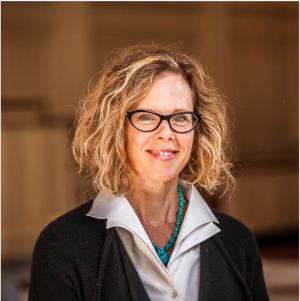
In my previous post (the second in a series of three) I reflected on deep learning as part of the formative educational process. I explored what it might look like to focus on students and the world they live in rather than on teaching our own particular (and often narrow) expertise. I suggested that part of the responsibility of forming students’ selves and lives involves commitment to our own personal and institutional growth. My institution (Brite Divinity School at Texas Christian University) holds out a vision of a world transformed by God’s love, mercy, and justice and names as its mission to educate and inspire people to serve God’s diverse world as leaders in churches, the academy, and public life. We claim to value “Scholarship that engages churches, the academy, and public life; Justice that enhances diversity, flourishing and wholeness; and Practice that enlivens intellectual, spiritual, and professional growth.” I resonate deeply with these values. I came to Brite, in part, because of these values. I long for any conversation among my colleagues about how we accomplish these in the classroom and in the lives of our students (and in our own lives, for that matter). I want to hear more about how they model careful listening, how they dignify diversity as a desirable norm, ways in which they manage to draw underrepresented voices out, and how they model effective conflict management in classrooms and hallways. How do they they help students learn to identify the implications of what they learned for engaging the suffering world? What skills and tools, what ways of being do they try to model? How do they enact justice and engage their work toward wholeness in the classroom and beyond? How do they enliven personal, spiritual, and professional growth? How do they teach toward cultivating a more flourishing world? These questions would likely sound ridiculous to many of my colleagues. “It is my job to teach them a discipline,” they might rejoin, “not teach them who or how to be.” Fair enough, I suppose. This is, after all, how most of us were trained. We learned to read, to dissect an argument, to analyze, and maybe to construct. Many of us never had a course in pedagogy, studying neither its purpose(s) nor effective practices. Our doctoral programs had us focused on content rather than process. We have gotten comfortable there and have had to continue the habits we learned as graduate students to have any chance of succeeding in the academy. I get it. I have done it, too. But I want to suggest that what we imagine our role as theological educators to be exposes how we think of our students and our responsibilities to them. Do we see them as students needing to learn biblical exegesis or history or psychoanalytic theory? To what end do we teach these? Would it change how we teach if we understood that our students are the future, the potential embodiment of God’s work in the world, a potential source of resistance, hope, and healing? Surely even those of us who have not studied pedagogy have heard of explicit curricula (what we claim to be teaching, what we focus on) and implicit curricula (what we teach by being ourselves, by the choices we make in the classroom; what we include and do not include on a syllabus; how we engage students and the teaching and learning community, etc.). Perry Shaw asserts that students learn more through the ways schools function—and in the way they experience the classroom—than they do from any verbal or written content they receive. Shaw quotes pedagogical theorist Robert Ferris as saying, “the faculty are the curriculum” (Transforming Theological Education: A Practical Handbook for Integrative Learning [Langham, 2014] 10, emphasis added). If Ferris is correct, then many of us have some serious unlearning to do. Most of us are not training future academics; rather, we are teaching students who will soon be parish ministers and other religious leaders, leaders of not-for-profit organizations, community organizers, and activists. They are or may be parents, partners, neighbors, and leaders. And yet many of us (myself included) teach the way we were taught. We teach the way(s) we are familiar with. We teach as professional scholars. But our students need something different. They need something more. They deserve something more. So does the world we all share. If the faculty are the curriculum, then our students are watching. They are absorbing our ways, our values, and our commitments. They are being shaped by the outlines of our own lives. I won’t speak for you, but my life as an academic is often pretty narrow, focused, and insular. As noted above, it has had to be, in order to gain and keep any status in the academy that I have “earned.” I am comfortable in my habits, the rhythms of my days, and in my heady work. But if Ferris is correct, I should be alarmed by what I am modeling. The academy can be a competitive, self-absorbed, and zero-sum place. The coin of the realm is critique and challenge and jostling for distinction. Is this what we want our students to take from their time with us? If we played out Kant’s categorical imperative, what kind of world would we be helping to create? Such a question invites us teacher/scholars to ask ourselves why we do what we do and to what we want to contribute. It calls us further than that, though. It invites us to ask what kind of being human we are modeling for our students, what we want to be modeling, and what hard and intentional work it will take to close the gap. I am a trained psychotherapeutic clinician, so the idea of sitting with someone to explore the stuck places in myself, to engage my potential areas of growth and change, and to face the wounds I carry does not hold stigma for me. Others will find their own way, and I support that—as long as we can all arrive at the same place: understanding theological education as a formative endeavor, whether we are clear and intentional about the ways we are forming ourselves, our communities, and our students or not. Deep learning is usually referred to in positive ways, but I worry about the kinds of deep lessons our students are taking with them without our intention, our consent, or even without our awareness.

[caption id="attachment_251233" align="alignright" width="424"] A “glacial erratic” on Skidegate, Haida Gwaii, British Columbia, Canada (photo by author)[/caption] “Could God create a stone too heavy for God to lift?” This question may be familiar to those of us who teach about the traditional qualities of God in the philosophy of religion classroom. The so-called “paradox of the stone” is a pithy yet fascinating riddle that helps unpack the inconsistencies and logical incongruities at the heart of the notion of omnipotence as a divine attribute. And yet, over the years I have found that even with questions as crisp and deceptively simple as this one can be, students find it hard to relate to ideas like these as anything more than abstract intellectual exercises. If students don’t know or don’t care about the Christian God, or even much about Christianity, why would they care to explore the labyrinthine twists and turns this question implies? I have found that one of my key challenges as an instructor is to create fruitful connections and open easily traversed pathways that bridge gaps between what can seem like archaic or overly abstract ideas on the one hand and familiar, even urgent, issues from our contemporary cultural discourses on the other. These, it seems, may not only be the problems of a philosophy of religion class in 2022, but are reflective of the deeper challenges that the study of religion faces in the secular liberal arts context. I teach a second level introduction to Western religious thought to undergraduates, most of whom have little if any substantive knowledge of Christianity—let alone the questions posed by religious studies. In this class, I engage with issues of faith and skepticism and the complex relationship between the two with undergraduate students from across the university. It is common to have, say, biology majors alongside fine arts students interacting with English majors who are in turn working on minors in international relations. The context is interdisciplinary and diverse. Few of these students are familiar with the broad intellectual and spiritual traditions of Christianity and yet all come to this class with their own set of questions. My role, in a class that can tend towards the abstract, is to provide points of connection where the tradition meets their contemporary experience and to guide a conversation where this encounter can be unpacked and more clearly understood—even if rarely resolved. For example, arguments for the existence of God are a staple part of any introduction to philosophy of religion. Not surprisingly, I cover the basics with Anselm and Aquinas, but I also bring in an ancient Sumerian beer recipe, a science fiction short story by Arthur C. Clarke about the nine billion names of God, and a poem by Emily Dickinson comparing train tickets to knowledge of heaven. Later in the course, we deal with another topic involving the significant challenges of the classic Problem of Evil. In addition to the traditional formulations, and various logical and evidential approaches, we look at William Nicholson’s play, Shadowlands, exploring the experience of writer C. S. Lewis and the untimely death of his wife Joy Gresham—rendered so poignantly in Richard Attenborough’s 1993 film of the same name. Interestingly, the challenge here is not necessarily to defend the existence of God in the face of clear evidence of evil. It can sometimes seem more of a challenge to convince students that it is worth arguing the case in the first place. By the time we get to this topic, it is important to have a sense of value for what religion can be and do, culturally and practically speaking, before wrestling with the tricky paradoxical puzzles that the problem of evil brings into stark relief. By the end of the course, as one topic builds on another, my hope is that students will appreciate such things as the difference between probability and possibility and the relationship between the sacred and the secular. I want them to understand that religious thought exists entwined and enmeshed in our cultural experience in ways that thwart our neat secular/sacred division. But most of all, I want them to appreciate, with as much vividness as I can manage, how religion continues to “speak” to the perennial challenges of human experience and interaction. In the most recent iteration of this course, as we approached the final weeks of semester, my students requested a topic of their own. As we passed the second-year milestone of the pandemic, they wanted to discuss the pervasiveness and power of conspiracy theories that seemed to have proliferated in the face of the ongoing global disruption that had so impacted their lives. For the students, the character of conspiracy theories appeared to parallel some of the major issues we had been developing through the course. I was certainly open to the suggestion. Typically, I would end the course with something topical, a current issue that served to draw together the various strands we had explored though the semester in practical and easily identifiable ways. But this time, I was fascinated to consider this alternative: a contemporary riddle that seemed for them so urgent and at the same time so challenging to account for. In our final discussions, I asked students to describe what was happening in those of-the-moment conspiratorial conversations. I asked them to consider scholarship on “conspirituality” and associated key examples that traced their way back to elements evocative of the New Age movement and the tragedy of 9/11. There they discovered issues of community and identity, of disenchantment and re-enchantment, and of faith and apocalyptic hope. Regardless of our conclusions in these final classes, it was apparent to me that they had located their own “paradox of the stone.” In these culminating conversations I found myself amongst the most engaged cohort of students I had ever encountered, dealing with the issues from the course in complex and applied ways in collaborative, lively discussions that really mattered to them. Indeed, inspired by my students, I went on to teach a full course on the topic of “conspirituality.” In some ways, this culminating moment around the phenomenon of “conspirituality” exemplified the challenge of teaching in the secular liberal arts context, the increasing difficulty of “translating” religious tradition for a contemporary learner, and it also offered a moment to celebrate. For me it was solid affirmation of my pedagogical efforts to bring the traditional and the contemporary together as a way of creating a flashpoint of engagement. But it was also a reminder that the classroom is a community of learners of which I am a part. Little did I anticipate that it would be the students, the focus of my teaching strategies, who would be the bridge builders, providing me with this most effective and evocative example.
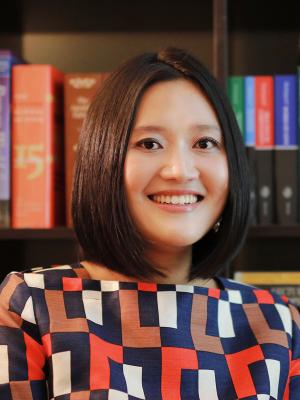
Staying at Trippet Hall on the Wabash College campus always feels like a treat. It was my privilege to go back and stay there for a week earlier this summer as a participant of the early career workshop for theological school faculty. We were the first group that Trippet hosted in three years, yet every corner of the building looked ready to welcome guests again. Amenities in guest suites, white table linens in the dining hall, and snacks and beverages in Clifford Lounge. Everything was in place. It was Thursday morning. At the very moment when I had just started shampooing my hair, a fire alarm went off. I hoped it would stop after a few beeps, but no, it kept going. “Oh dear, I can’t go out like this,” I thought. I decided to finish the shower as quickly as possible. With the shower faucet turned off, it became clear that all the fire alarms on the entire third floor of Trippet Hall, including my room, were going. My heart was beating fast. I hastily reached my hand to the towel hanging on the bathroom door, thinking, “Is this from the kitchen? What if this is something serious?” Right then, someone banged on my door, “Fire department! Open the door!” My heart was now pounding. “Give me a second!” I shouted. No time to take real, presentable clothes out of the closet. I picked up my pajamas lying on the bed, barely put them on, and snatched my phone and wallet. Ready to evacuate, I finally opened the door, and there was a burly firefighter standing in front of my room. “Just wanted to make sure nothing’s on fire in your room,” he said, with a big smile on his face, even. It was simply an alarm malfunction. The following day at around the same time, I was shampooing my hair again, and all the fire alarms on my floor went off, again. As soon as I got out of the shower, I rushed myself, recalling what had happened yesterday. Putting on clothes, I thought, “A firefighter will be here soon. I’ll be so ready this time. Lesson learned!” I even felt a bit proud of myself. Ten minutes passed; nobody came. It turned out that they were testing the alarms to fix them. What does it mean to be “ready” in theological education? Our disciplines have trained us to understand readiness as being about control. To be ready to teach is to be in control—of the material, of the classroom dynamics, of what’s going on in our field. Our readiness in the academy is enfleshed in the authority we build and exhibit through degrees, publications, rank, and service. It is often assessed by the number of checkboxes we check: How many degree programs are you able to teach? How many languages or subjects? How many committees are you willing to join or lead? How many students will you advise? Often, we let this “control” mode dictate our pedagogy as well. One certain page number on my lecture notes, although I know I will never get to that page in class, seems to prove that I have prepared enough. More details in my syllabus and rubrics, although I know they cannot wholly assess students’ learning and engagement, seem to ensure my grading is fair and informed. We often come to teaching with the assumption that more control means more expertise. In Trippet 301, I had to pivot to a different kind of readiness to open the room door and let the firefighter know at the right time, there’s no burning object in my room and everything is fine. What does it mean to be “ready”? At one time, I thought having my framed PhD diploma on the wall would indicate I was ready to teach. Though it conveys that we have completed onerous work, that does not equate readiness. Over time, I have learned that we become more ready as we open ourselves to unlearning what we know and how we were trained. We become more ready as we open ourselves to surprises and challenges and let them form us. We become more ready as we center students’ processes and learning, rather than necessarily their outcomes and proficiency. In the end, our readiness is built upon our intentional and habituated openness. Because the line between teaching and learning is always porous.

My family spent a lot of time this summer traveling in our car. As we drove up and down several eastern and southern states, with stops in Pennsylvania, Maryland, Virginia, North Carolina, South Carolina, and Georgia, the thing we dreaded most was traffic. We groaned and sighed when coming to a sudden stop as the smartphone displayed a bright red line along our route. Even when Siri tried to comfort us, indicating that we were still on the fastest route, we exchanged looks of disgust and exasperation with one another. But traffic did not deter us from travel, and we were always relieved when we made it to the next destination in our journey. Ultimately, we accepted that the traffic we encountered was inevitable and paled in comparison to the joyous experiences we shared together. Reflecting on traffic evokes the faculty meeting at my seminary and probably other seminaries as well. Here is an obvious and perhaps irrefutable thesis statement: Theological educators do not like faculty meetings. In fact, many of us despise them. We think faculty meetings are ineffective misuses of time (cue the “This could have been an email” meme) and sometimes dangerous spaces abounding in microaggressions that stem from intercultural missteps and interpersonal conflicts. But we accept that the faculty meeting is part of the job. When I talk with colleagues from other institutions, we commiserate about the faculty meetings at our respective seminaries and observe how they lack the collaborative spirit and invigorating dialogue we have experienced during the Wabash Center’s workshops and gatherings. At my seminary, I have offered an expression that is part smile, part frown, and all dread with colleagues when bumping into them on the way to a faculty meeting. The expression is hard to describe in words, but I will venture to suggest that many theological educators can empathetically visualize my look with ease. Over the past two academic years, I have taught an interdisciplinary course with one of my colleagues that serves as a concluding capstone for Master of Divinity students in their final semester of study with us. Because the learning aims include synthesizing lessons from other courses and preparing students for vocations in pastoral leadership after they graduate, my co-instructor and I ask the class at the onset what topics they would like to engage together and what kinds of guest lecturers they would like to hear from in the final weeks of the course. One of the topics that arose was church administration, with a question about how to facilitate meetings with laypersons, such as deacons and elders. In the denomination to which my seminary belongs, the Presbyterian Church (U.S.A.), one of the responsibilities of a pastor is to be the moderator of the session. The denomination’s Book of Order explains that the session is “composed of those persons elected by the congregation to active service as ruling elders, together with all installed pastors and associate pastors.” It is therefore not surprising that some of our graduating students have session meetings in mind and desire to learn more about exercising leadership in meetings. What is surprising to some of my students is the reality that our seminary does not provide an exemplary model for meetings. One student divulged how it confounded them that the faculty at our seminary, with many professors they admired so deeply, struggled to conduct creative and productive meetings that were different from the corporate world and other secular professional contexts. It seemed to them that their professors were not practicing what they were teaching. Another alumnus, a few years after graduation, told me that they had outgrown some of their naivety about the seminary as an idealized church-related institution. When this alumnus was a student, they would have given anything to be a “fly on the wall” at a faculty meeting. Now they would never want to attend one because they believed that there was no joy in witnessing their former professors at our collective worst. Can the seminary faculty meeting be saved? I do not know (probably). But here are two recommendations that I have learned from my experiences with the Wabash Center. The first is the importance of clear objectives. Because the Wabash Center convenes faculty and administrators from a wide array of colleges, universities, divinity schools, and seminaries, the leaders at every workshop I have participated in have communicated their goals, hopes, and expectations with precision, care, and consistency. If one goal of a seminary faculty meeting is to ensure that all voices are heard and included, then two expectations are that the participants receive the preparatory materials with sufficient lead time and the meeting itself is moderated in ways that foster mutuality, equity, and reciprocity. Seminaries also need to be honest about their adoption of hierarchical systems from the academy. If the culture of a seminary is such that untenured faculty members listen and do not speak, then it is unreasonable to hope that faculty meetings embody the principles of inclusion and cooperation. If the purpose of a meeting is to simply vote on quotidian matters that require faculty approval, then the expectation ought to be modest and sights should be set on no more than a perfunctory meeting that moves forward the ordinary business of the seminary. The second lesson I gleaned from my experiences with the Wabash Center is the generative energy that results from collaborative leadership practices. I observed a leadership team with several persons sharing authority with one another and inviting every participant to enact their distinctive gifts. Each of us were given opportunities, with ample advance notice, to provide leadership that displayed our experiential insight, intercultural intelligence, and distinguishing pedagogy. The spotlight was rarely on one leader for a prolonged amount of time and the leaders wore their authority lightly. When a participant talked too much, or was the first to speak on several occasions, they were encouraged to take a step back and make room for others who may not process as quickly and needed a few moments of silence before fully engaging the discussion at hand. We met in various spaces and with diverse formats that fit the stated objectives of the sessions and cultivated a spirit of imagining and envisioning together. Of course, our seminaries are not the same as the Wabash Center. The context of a seminary faculty meeting differs from a Wabash Center workshop, but perhaps there are principles from the latter that we can apply to the former. However, I am unsure whether seminaries like mine want to change. At some of our theological institutions, the faculty meeting is the same yesterday, today, and forever.
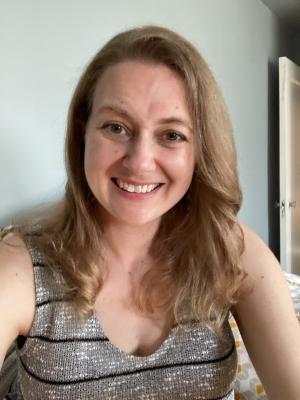
Education prepares learners for a world that educators cannot possibly anticipate. This has been true for longer than most educators would like to admit but it is even more the case today. Learners are viscerally aware that they inhabit a rapidly shifting landscape that calls the relevance of our courses and institutions into question. These shifts have become all the more dramatic and unpredictable in the last few years since the onset of the COVID-19 pandemic. The relevance of education in theology and religion is made even more precarious when we present ourselves as a—or even “the”—source of information. To be a source of information is superfluous in the digital information age. Content is googleable. Students have a boundless source of information at their fingertips should they seek it. They are in urgent need of something more important and less accessible: the skill set to critically assess and creatively apply that information while remaining curious for more. When my children first started school, this was the kind of education I wanted for them: a student-driven, experiential education in 21st Century Skills that would take their voice and agency seriously. I found it in classrooms practicing Problem and Project Based Learning (PBL), an approach to teaching and learning that has long been used in medical and engineering schools and that is increasingly present in elementary and secondary contexts. PBL confronts learners with real life complex problems, asking them to seek out and apply the necessary skills and information to address them. In that way, the course content becomes the means rather than the goal, resulting in increased relevance and retention. The learner is implicitly formed, not by receiving the content but by creatively applying it towards a concrete result. This formation takes the learner’s knowledge and experience seriously and encourages them to utilize it so that they can do the same in whatever landscape they inhabit or enter. What better approach, I thought, for teaching and learning in theological education and religious studies. I began experimenting with what a PBL classroom would look like in an introductory religious education course in the spring semester of 2020. With trepidation, I began with a sparsely populated syllabus that provided structure and a set of broadly applicable readings, but left time for students to collaborate in small groups around the problems that were most important to them as I circulated, supporting them in seeking out the necessary content to address the problems about which they were most passionate. One group focused on creating Brave Spaces while others wanted to consider how to nurture spirituality in the classroom or apply what they had read about multiple intelligences. Our end goal was not a group presentation of research on the topic; they were to teach the class by doing, not talking about, what they had been working on collaboratively. In the final classes before spring break, they took leadership of the classroom to work toward Brave Space, nurturing spirituality, and engaging multiple intelligences. We planned to return in two weeks to begin a second set of projects focused on formation through experiences outside of classrooms. It was fortunate that we had completed those first projects when we did. When we returned to class, we did so on Zoom. After a lengthy check-in it was apparent that every learner in the virtual space had an urgent real-life complex problem to address in religious education and it was the same problem I had: how could we teach if we couldn’t meet in person? We chucked the entire second half of the syllabus. We spent the next several weeks being and finding resources for one another. Each learner’s problem became not just real-life and complex but took on the specificity of their context so that their ways of addressing them were as varied as the communities they served. They took seriously that they were the content experts in their own contexts. I rewrote the rubric for the final project. At the end of the semester each individual instead of each group took on leadership of our virtual classroom so that we could share in a peer-led online learning activity. My goal had been for them to learn about teaching by doing it; in the process we became a community of learners. In the two years since that first semester when PBL went from theoretical to urgent I have continued to adjust my approach so that I gradually hand over the leadership of the (now multiplatform) classroom. The pernicious prevalence of the PowerPoint presentation motivated me to model experiential teaching and learning in a variety of forms at the beginning of the semester before asking everyone else to do the same. When asked to teach asynchronously, it became clear that I would also need to model experiential asynchronous teaching so that I could ask learners to teach one another asynchronously. Instead of weekly interactive class meetings, I listed a different interactive asynchronous learning activity engaging each unit’s content at the outset then asked all enrolled to do the same for their own passion projects and assess one another’s learning activities in conversation on the discussion board. It takes courage and humility to move from a content-centered course to a PBL classroom. I love my content. Every reading I am accustomed to assigning feels urgent, as if I cannot send learners out into the world unless they are equipped with it. But the real-world complex problem I am living with is that I am not sending them out at all; they are already living into a world that is shifting under their feet and the ability to creatively shift with it is far more urgent than anything I could ever assign. Interestingly enough, they end up discovering that they need the content along the way and cherish it all the more for having made that discovery themselves.

“When we heal the earth, we heal ourselves.” This quote from environmentalist David Orr expresses the importance of our interconnection with our earth. For my undergraduate students, especially in the midst of the COVID pandemic, an immersion into nature contributes to both physical and mental wellness. The idea of inclusive care—for self, for others, and for the environment—extends human rights and highlights the political and spiritual dimensions of ecojustice. In my teaching experience, these connections are best made with community partners. Students in my Religion and Ecology class work in practicum teams as a key component of the theory and praxis focus of the course. One partnership is with the Agnes Scott Center of Sustainability. Student teams work with the staff on a practicum project in several areas: horticulture (organic garden), seed library (with the college library), trees, Audubon sanctuary area, green buildings, alternative energy, waste diversion, and sustainability education in dorms. Some of the projects are research and development for the future, such as for the renovation of the college greenhouse. Depending on the semester and the needs of the Center, students have done invasive species removal, built birdhouses, created a campus bird guide, designed an organic landscape for a grassy area over a large geothermal unit, written a proposal for natural landscaping (a “green” campus lawn), built fairy houses, designed an aromatherapy garden, written a proposal for connections of the dining hall with local organic gardens, among other things. Connecting the course material with a hands-on project is a way for students to explore concrete ways of being part of sustainability work on our campus. Trellis Horticultural Therapy Alliance, a local Atlanta nonprofit organization, also provides practicum opportunities for community partnership. Trellis’s mission is “using the power of gardening and nature to improve the lives of people living with disabilities and chronic illness by providing purpose, fostering independence, and creating community.” The partnership began with an invitation to the organization’s founder, environmental scientist Rachel Cochran, to be a guest speaker in class. The purpose was to raise awareness on the practice of therapeutic horticulture and the benefits of gardening and immersion in nature. Trellis (Trellis Horticultural Therapy – Planting Seeds of Possibility) is a member of the American Horticultural Therapy Association (American Horticultural Therapy Association). This partnership provides students with opportunities to engage a variety of wellness and social justice issues, including: food insecurity, nonprofit organizing, climate change, sustainable living, resilience and mental health, as well as experience working in non-profit organizations (including grant writing, leadership, and career exploration). Students work in various locations: the Ability Garden at a local arts center that services seniors, veterans, disabled adults, and children with autism; a local community garden plot with men in a drug and alcohol recovery program, and the Dignity Garden behind a day center for seniors with dementia at a strip mall (and a student project of a fundraising video for Georgia Gives Day that raised $9000 for the organization). Several students continue to volunteer with Trellis or do internships after the semester ends, including one summer internship with their program at an organic farm at a transitional correctional institution for women felons. A basic pedagogical concept is that students become agents of knowledge about the local issues around ecojustice and climate change. They also become visionaries of the possibilities for change. Students often encounter institutional blocks: around certain traditional aesthetics of campus lawns, around the demands of the local movie industry that frequently uses our campus for filming, around issues of funding (a renovated greenhouse would also require rejuvenating the faculty position in Botany), around issues of acceptable community partnerships, and around the general limits of how far an institution will invest in environmental justice. Amidst the general apocalyptic mood of global warming and dangerous (albeit EPA approved) pesticides in our campus grass, sprayed by poverty-wage outsourced staff, the course framework of environmental racism in the US South and the moral failure of a capitalist system, there is also the wake-up call and solutions of Project Drawdown, and course readings from Braiding Sweetgrass to Georgia Interfaith Power and Light to the Coalition of Immokalee Workers. The issues around ecological justice can be overwhelming. Clearing paths for wheelchair accessibility in a garden, planting and harvesting kale, preparing an organic dinner with men in a recovery program, or crafting with middle schoolers and seniors can provide new vision and energy, and shared community and wellness.
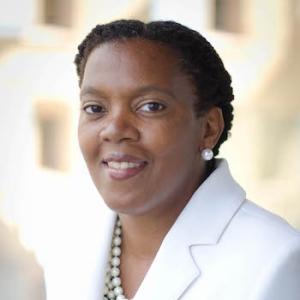
In late May 2021, a shocking revelation made the news. The T’Kemlúps te Secwépemc First Nation announced that evidence was found using ground-penetrating radar of 215 unmarked graves of Indigenous children on the grounds of a former church-run residential school to which Indigenous children were sent as mandated by the Canadian government. Since then, hundreds of other unmarked graves of children and youth at other residential school sites have been found. These were educational institutions from which students emerged as “survivors” rather than “graduates.” They were institutions characterized as perpetuating “cultural genocide” aimed at wiping out Indigenous cultures, beliefs, and languages. The first opened its doors in 1828 and the last closed in 1996. The horrific findings at T’Kemlúps and other sites of former residential schools provided further evidence of the abuse suffered by generations of Indigenous children as documented in the Truth and Reconciliation Commission on Indian Residential Schools which ran from 2008 to 2015 in Canada. To lose one’s life as a student at an educational institution staffed by adults entrusted with care, many of whom were priests and nuns, is the ultimate in betrayal of trust. The revelation of these deaths of Indigenous children and youth prompted me, as a religious studies professor, a woman of Caribbean heritage and descendant of enslaved Africans living and working in Turtle Island/North America, to reflect on the broader history of what “education” in the twenty-first century means and my role as an educator. Given the legacy of church-based institutions in the education of enslaved, indentured, and colonized peoples during the colonial era, emerging untouched as a disembodied learner is impossible. What challenges have we inherited as students and educators and what pedagogies can we bring to classrooms as correctives and alternatives, including systems of Indigenous knowledge outlawed during the colonial era? This is an enormous question a thorough answer to which is beyond the scope of this short reflection; however, daring to ask this question is necessary if as educators we are to confront with honesty and integrity the myriad ways in which educational institutions and processes, even those which are well-meaning and couched in terms signifying a commitment to equitable principles, have been complicit in colonial rule. Throughout the British Empire, children and youth were subjected to disciplinary action under colonial rule. Canada’s colonial history as a settler colony in the British Empire and Caribbean nations as a former monocrop economy dependent on the production and sale of sugar and its byproducts are linked. Some children, at various times, were deemed by law and/or custom unmanageable, “truant,” “incorrigible,” “delinquent,” and were subsequently criminalized and in need of “reform,” “training,” or correction by some combination of discipline, punishment, and education. Training schools were instituted in the Caribbean beginning in the post-slavery era, primarily, though not exclusively, for male children and youth. In a Canadian context, as discussed in the documentary Born Bad (CBC, 2021), training schools were instituted in the early 1930s with the final one closing in 1984. These training schools, which predominantly affected white, working-class youth, were total institutions which were supposed to look after the educational and cultural needs of children and youth in a residential setting. The training schools were often located in small towns where children were removed from their families and home communities. In recent years, alleged abuses at former Canadian training schools have come to light with a class action lawsuit pending. In a Caribbean context there is evidence of a shift towards awareness and addressing of factors such as childhood trauma in the lives of children and youth in training schools. What has become increasingly apparent over the last year is that even though unmarked, the burial places of the deceased Indigenous children and youth remained a part of the topography of the physical land and cultural landscape. Secrets of small towns and rural communities in which residential schools and training schools were located are now being revealed to a broader public. In effect, these sites are simultaneously unmarked and marked by their tangible links to individual families and communities. The challenge for religious studies education is to come to terms, honestly, with the legacy of churches (in Canada, the United Church, Roman Catholic and Anglican), mandated by the federal government for over a century to carry out residential school education. The ways in which religious studies is taught could benefit from exploration of these colonial linkages between the Caribbean, Canada, the US, and other former British settler colonies such as New Zealand, Australia, and South Africa. Studying the impact of religious institutions in these geographically distant yet historically-linked areas would require a comparative approach anchored in the experiences of survivors and witnesses revealed through combined methods of historical and archival research and shared oral histories. This endeavour will require collaboration and fortitude but it is a necessary process and one that begins with individual reflections and actions of engaged educators. For information about the Truth and Reconciliation Commission of Canada’s Calls to Action please see: calls_to_action_english2.pdf (gov.bc.ca). For information on contemporary status of incarcerated youth in some English-speaking Caribbean countries see “The Status of Youth in Incarceration in the Caribbean” (2020): FreemonNunoKatz2020.pdf.
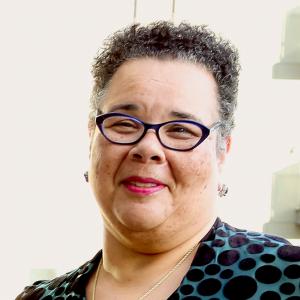
Teachers of religion and theology recognize, from preparation and experience, the complexity of teaching fields of study in which students have a personal stake. Students, whether enrolled in courses on religion or theology, often base their engagement in the course with their personal faith, their personal moral codes, their personal ethics, decisions, and behaviors. Even if the course is not intended for this purpose, students signal with their questions and participation, that they are thinking of the course materials through the lens of their own lives. Teachers cannot escape inquiries about events in the news which daily shake and effect lives. Our classrooms are permeated with questions, concerns, and issues which arise out of that which grips the attention of our nation and the world. In this moment, we are gripped by Covid pandemic/endemic, Monkey Pox infections, Russia’s war in the Ukraine, the prosecution of those involved in the U.S. Capital insurrection on January 6, global economic inflation, major shifts in legislation concerning women’s reproductive health rights, routinized school shootings and failed gun legislation, marriage inequality debates, instances of abusive police power, privatized correction systems, climate change, immigration challenges – to name a few. And, we are aware that a society grappling with these kinds of political, economic, and civic issues are also then challenged by persons suffering with depression, insomnia, increased suicide, grief/loss, effects of domestic violence, increased drug addiction and abuse, exile into the prison industrial complex--to name a few. On any given day, and in any given class session, these issues are at play. Not anticipating conversations around these topics, ignoring the potential for these conversations and/or declaring that these conversations are “inappropriate,” will only serve to further the suspicion that the scholarly discourses of theology and religion are irrelevant, outmoded, and unnecessary. Our students, in their insistence and persistence, declare to us that we have arrived at an inflection point in world history. What we teach and how we teach in this moment is critical to our survival. The stakes are high for teaching because its practice is one of the most powerful apparatuses of change in any society. What will it mean to harness this power? What will be lost if we do not? For those of us charged with teaching in this moment it is easy to lose sight, given all that is swirling, of our purpose. The aim of educational leadership in this right-now moment is to imagine, design, and build new routes into beauty, health, compassion, citizenry, community and imagination. We must recognize that this moment of chaos and upheaval is also a moment of opportunity. In this moment of seeming impossibility, leaders/teachers must muster the wherewithal to envision a future that is whole, healthy, and just, for all. And then we must build that future, together. The good news is that we are scholars trained in critical thinking and analysis. We know how to interrogate for the solving of complex problems. Large scale and huge scope problems are our jam! We are faculties of persons capable of thinking toward new visions, dreaming new dreams, and we can learn to relinquish that which no longer sustains us. We know how to disrupt narratives of systemic hatred, systems of injustice, and tear down conditions under which people live one form of debilitating violence or another. Our advocacy matters. The difficult news is that we are unsure if we want to insist upon institutional nimbleness, adaptation, creativity, and empathy. If and how we are nimble as we react to the complex challenges of positive and negative changes will determine our survival. Our ability to adapt to new realities will be key to opening up our future. The ways in which we care for ourselves and others will make a difference in our endurance. We have what we need; and we must not hesitate to empower those who are courageous, those who know how to design for a new future. So, we ask for persons, colleagues, in and beyond the academy, to reveal themselves for our benefit and learning: Who knows the skills, habits, and practices of redesigning? Who can assist us reconceiving our schools? Who are our best strategists? Who has the know-how for institutional creativity, imagination, and re-building? Who can draw blue-prints for the new and the needed? Who understands nimbleness and can train us? Who adapts well and quickly and can teach us? Who sees that there are multiple realities and can show us? Who can lead us into our hopeful future? Friends, we must, in dramatic ways, pivot the current educational enterprise that would have us standby silently, passively, and complicitly to a world that would kill needlessly. We need leadership who will cause us to come together, be together, stay together to do whatever we can, to do whatever it takes, as teachers and scholars, to save our shared future. Do not go numb. Do not stop breathing. Do not avert your eyes, lower your head, or go invisible. Do not get used to the death toll reports. Be disturbed. Dare to hope. Be about teaching that is relevant, timely, and attends to the needs of those yearning to live. The power of teaching is at your disposal. Harness it!
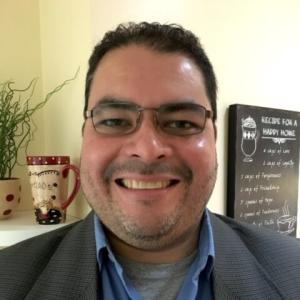
Our seminary recently hosted a symposium on beauty. For the occasion, I performed a musical interpretation of a digital art piece entitled “By night and by day,” part of a larger composite of cloud themes depicting God’s presence with his people by artist Sarah Bernhardt. I explored a range of sonorities on the double bass to tell the Exodus story, to depict God’s leading of Israel out of Egypt by a pillar of cloud by day and of fire by night. To guide me in my portrayal of the theme of divine presence, I composed a musical setting based on a melody from a Latin American song entitled El Señor es mi luz (The Lord is My Light) based on Psalm 27. The psalm speaks of Israel’s trust in the Lord’s protection from adversaries who assail her during her earthly pilgrimage. The psalmist also sings of Israel’s eschatological hope to dwell in the house of the Lord forever and behold his beauty in his temple. In my composition I employed word painting, a technique used in sixteenth century music to match a concept in a written text with a corresponding musical effect. The following description of the flow of the piece explains how I used the range of the double bass to communicate various aspects of the biblical story. High pitch harmonics placing fingers over strings The piece begins with a variation of the psalm melody using high pitch harmonics, which are achieved by touching the strings without pressing them. This technique communicates a sense of God’s presence on high as Israel prepares to cross the sea. It is a calming presence; God is in control. Energetic tremolos with the bow The harmonics are followed by energetic tremolos made with rapid bow movements to the chorus of the hymn. This technique expresses the tumultuous movement of God’s people away from their enemies, with the pillars of fire and cloud ahead of them as they rapidly (and perhaps a bit anxiously) make their way through the great waters. Hitting strings with the bow’s wood (col legno) to introduce the theme (chorus) To express Israel’s proximity to the waters of salvation, I play the psalm melody with the back of the wooden bow (col legno technique), evoking images of drops of water falling on or sprinkling faces and bodies as people prepare to cross the sea. Flowing lyrical version of the theme with the bow (verse, stanza) Then I play a flowing lyrical version of the theme with the bow, depicting Israel’s safe arrival to the Promised land, which anticipates the final beatific vision of God’s people in his presence. Festive plucking to a Cuban guaracha Plucking the strings (pizzicato), I play a Cuban guaracha (salsa) rhythm based on the song’s chord progression to express the mood of eschatological fiesta after the people’s safe passage through turbulent waters into the Promised Land. Playing a Panamanian tamborito rhythm percussively on the wood of the bass… Finally, I sing the hymn’s chorus in Spanish while tapping the top wooden shoulders of the instrument to a tamborito Panamanian rhythmic pattern, using the bass in a percussive way. So, what makes the piece a Latin American interpretation? The most obvious element is the use of a psalm in the Spanish language. But the more interesting ones are the plucking of strings to a Cuban Guaracha (salsa) and the drumming of the wood on the shoulder of the bass to a Panamanian tamborito. But why infuse the text with a Latin American spin? Here the context of the performance matters. I have performed this piece in three settings with similar audiences—predominantly White, monolingual (English), mid-Western church audiences in the United States. By incorporating these elements in the performance, I am inviting the audience to imagine a world in which the biblical story is told, heard, and sung through Latino/a eyes. I am using music as a gentle challenge to see the biblical story in the context of the catholicity or universality of the church, which is a church of people from many ethnicities, languages, and nations. I am also raising awareness about the presence of forgotten Latino/a neighbors whose voices are often not heard, who crave for belonging, justice, and the psalmist’s hope in God’s deliverance. By foregrounding these elements into the piece, my double bass functions as an extension of the Latino teacher-performer’s own identity as a proclaimer of God’s story, a bearer of an inclusive catholicity, and a herald of hospitality, justice, and hope.
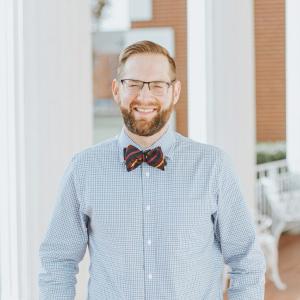
“You are a creature in the midst of creation.” Those words, which I have heard or recited in versions of the Ignatian Examen countless times in the past decade, kept returning to my mind as we gathered in our outdoor classroom. That space and time made it possible to better notice and appreciate our communities of fellow creatures, human and nonhuman. As I noted in my first blog in this series, my students in “Contemporary Theology” and I found it almost impossible to sustain discussion indoors while masked and socially distanced. Outside, though, our conversations often flowed freely. Experienced educators work hard to cultivate a sense of belonging, and each class develops its own collective personality. I have noticed that the classroom communities that I have had since beginning to teach outside have often been markedly stronger—students are more resilient, more engaged, and more willing to be challenged constructively—than those I was able to foster indoors. I took primary responsibility for setting up and tearing down the classroom—including moving our portable whiteboard, stored chairs, and a table for my laptop for Zooming students. But I invited students to share in such responsibilities and many commented that doing so enhanced their learning and sense of belonging. By meeting outside, despite the challenges, students noted that they knew they were doing their part to keep our community safe. The distinctive contingencies and flexibility required to be outside enhanced our sense of togetherness. The specialness of the opportunity to be outside seems to have primed us to attend well to one another and to the unique tasks of the moment, working to ensure that we could safely and fruitfully continue meeting. Neighbors and members of our uncommon community often passed by and through our classroom. Students, faculty, staff, administrators, prospective students, and other visitors passed by, reminding us of the institutional context of our shared work and of our accountability to one another. We were reminded of our relationships with and impacts on the nonhuman neighbors in our community constantly. I was not the only one to root around in the mulch—one day when I reached into the soil to show my students the mycelium, I discovered instead a beautiful millipede going about their own work of decomposition. We were joined by towhees, robins, and countless other birds who made a ruckus in the leaves and mulch of the flower beds as they searched for food. Sometimes five-lined-skinks, catching the sun with electric blue tails, skittered by or paused to soak up the heat from the bricks. Bald eagles, ospreys, red-tailed hawks, black vultures, and turkey vultures soared above us majestically. The bird song sometimes overwhelmed us in its constancy and diversity. In late summer and early fall cicadas serenaded us with the birds, and in the spring upland chorus frogs and spring peepers made their contributions to the soundscape. On a warm early spring day in March one class asked if we could meet for class on the bank of the French Broad River down the steps from our normal classroom. An otter, a great blue heron, and countless bluebirds joined us that day—or rather, we joined them. Sometimes harmless but intimidating carpenter bees insisted on participating in our discussion, buzzing and bumping along the picnic tables. On multiple occasions I had to rescue wasps and spiders from terrified students, gently scooping them up and relocating them away from danger. God had created them and declared them good after all (Genesis 1.21, 24, 25), our ignorance and incredulity notwithstanding. Just as God does not need us (Acts 17.25), I reminded everyone (including myself) that God does not need them; but God nevertheless calls us and them into being out of love. One September day immediately following class a student shouted my name from just up the stairs: “Dr. Gordon, there’s a snake!” A midland rat snake was crossing the road towards our classroom. The distressed serpent had crawled through erosion control mesh that was cutting and constricting its body. It was a poignant reminder of how human decisions and assumptions cause suffering for our nonhuman neighbors. I borrowed a pocketknife from a student, freed the snake, and released it down the hill. Once, a flock of thousands upon thousands of starlings brought class to a complete standstill. The deafening cacophony of their calls left us no choice but to watch as they moved from tree to tree over an area where the undergrowth consisted solely of English ivy. Both groups of organisms were clearly thriving, but they do so at the expense of our native nonhuman neighbors. They are both here in east Tennessee, I reminded us all, because of human choices. In my classroom without walls, we often talked about God’s transcendence and otherness, but we learned also of God’s nearness, God’s care for our particularity, and that our particularity is bound up in countless relationships with other persons, and with our nonhuman neighbors—both animate and stationary. Such lessons came to us outside without much effort on my part. Resting in the cool of autumn and the early warmth of spring, listening to the birds and cicadas and frogs and lawnmowers and children, smelling the damp mold and blooming roses, setting up and putting away chairs or shade canopies, we could sense and know well our connections to one another, to the place itself, and to God, as “creatures in the midst of creation.”
Categories
Write for us
We invite friends and colleagues of the Wabash Center from across North America to contribute periodic blog posts for one of our several blog series.
Contact:
Donald Quist
quistd@wabash.edu
Educational Design Manager, Wabash Center
Most Popular

Are You Okay?
Posted by Nancy Lynne Westfield, Ph.D. on October 1, 2025

On Plagiarism and Feeling Betrayed
Posted by Katherine Turpin on October 27, 2025

Executive Leadership Involves New Questions
Posted by Nancy Lynne Westfield, Ph.D. on December 1, 2025

Embracing the Imposter Within
Posted by Fred Glennon on September 15, 2025
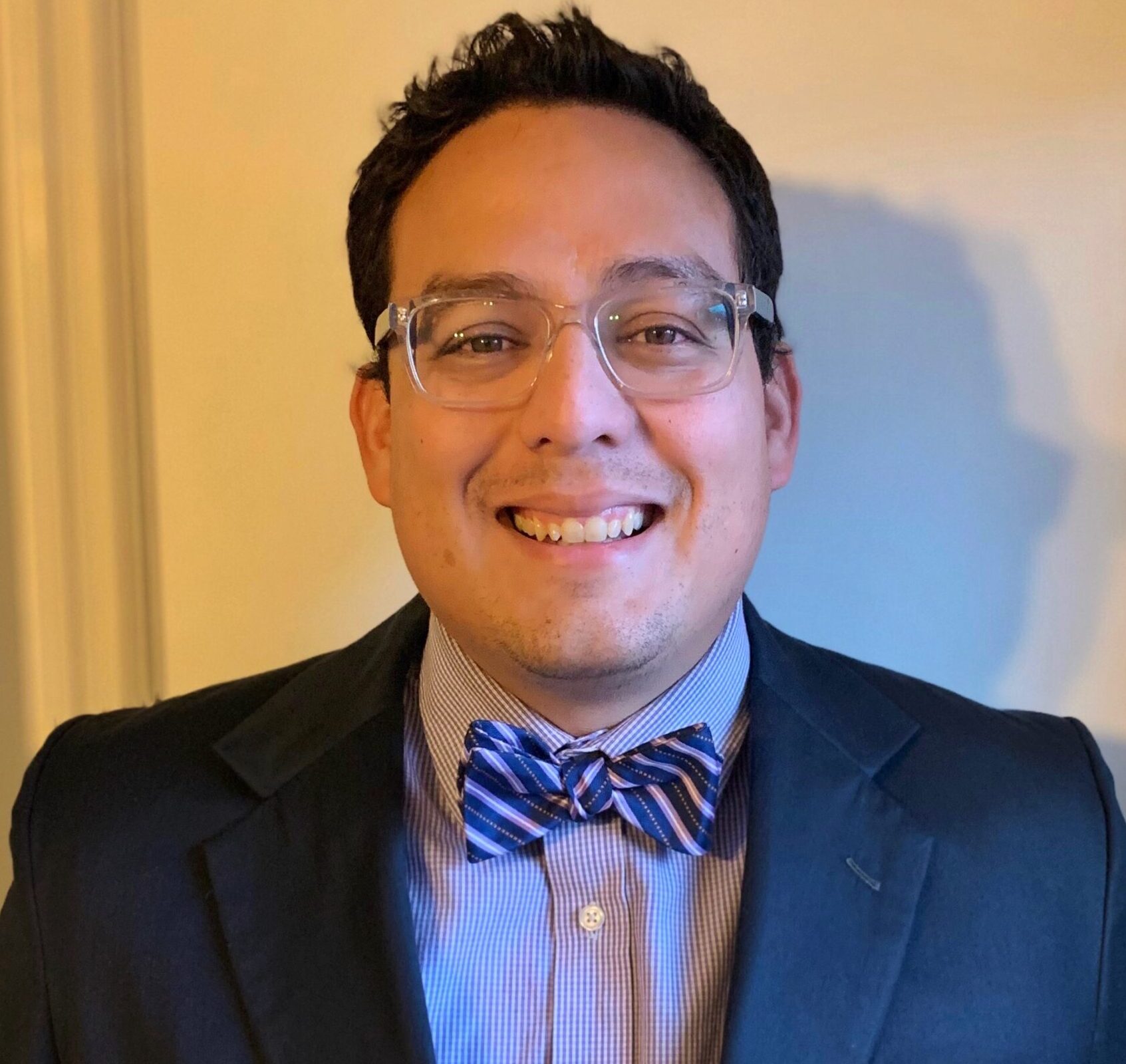
Xenophobia
Posted by Daniel Orlando Álvarez on October 15, 2025